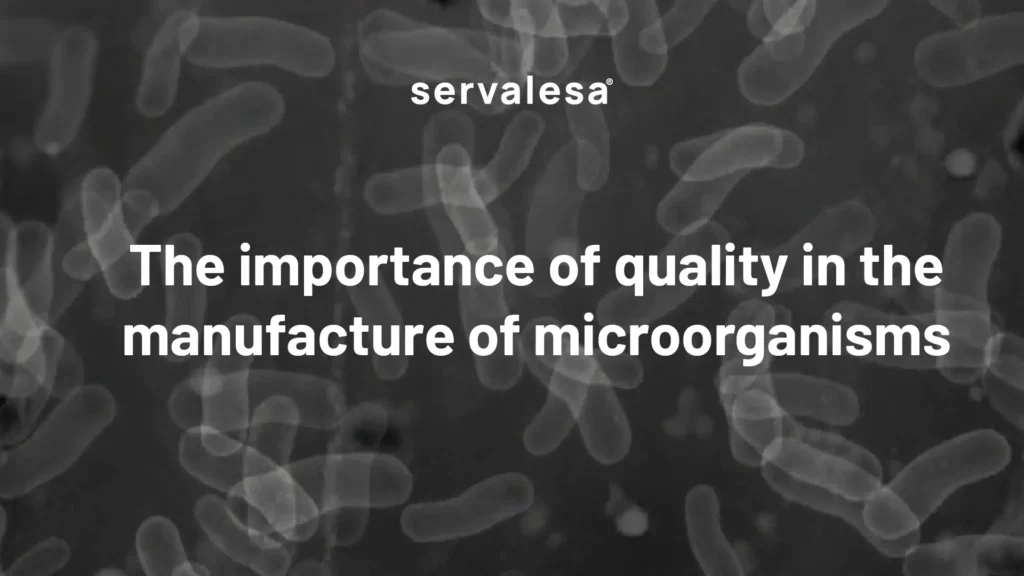With the objective of guaranteeing food safety and improving soil balance and fertility, optimizing crop yields. It is essential to use agricultural solutions that have been subjected to stringent quality controls during their microorganism manufacturing processes and, obviously, that have passed them satisfactorily.
Nowadays, biostimulants and biofertilizers of microbiological origin have burst into the plant nutrition market with great success. In the formulations of these products, microbial fermentation represents the main raw material and, as such, must follow these strict quality controls during the production process.
PURITY AND VIABILITY AS A PRIORITY
Quality standards are fundamentally based on ensuring the purity of the strains used in the production process. In order to avoid the presence of other contaminating microorganisms that could compromise the quality of the fermented product, either by producing other metabolites that alter the efficacy of the product or by being potentially pathogenic microorganisms.
For this reason, during the industrial production process, it is of vital importance to implement purity controls in which, by means of periodic sampling, the absence of contaminations in the fermented product is verified. There are different techniques that allow these verifications which, although variable in precision, are also variable in time to obtain results, so they must be combined and used in a complementary way. Such techniques are, among others, direct observation of the strain by optical microscopy, phenotypic characterization based on sowings in specific solid culture media and biochemical tests and, finally, molecular identification.
By observation through the optical microscope it is possible to distinguish morphologically the microorganisms present in the sample. Being a pure culture, there should be no variability in the observed morphotypes or movement patterns for those strains with motility. This homogeneity observed immediately is verified by the purity of the triple streak culture, sowing in Petri dishes and incubated for the corresponding period of time, where all colonies, except in cases with double morphology, must be identical. Likewise, the response to bacterial biochemical tests must be accurate, confirming that all colonies maintain the same metabolic properties.
Finally, partial sequencing of the 16S rRNA gene in prokaryotes, or the D1/D2 domains of the 28S rRNA gene and/or the ITS region in eukaryotes, can clarify or accurately confirm any hint of uncertainty that may have arisen from the above controls, and thus ensure the purity of the fermented batch.
MICROBIAL FERMENTATION: A COMPLEX CHALLENGE
In addition to the purity of the strain, another of the primary quality standards is its viability. It is not only a matter of producing large volumes of fermentation with the target microorganism, but also of ensuring that it is at the highest concentration, meeting the colony-forming units declared on the label of the final product and ensuring its viability throughout the product’s shelf life.
This is achieved because large-scale microbial fermentation is a complex, highly monitored industrial bioprocess in which nothing is left to chance. Factors such as agitation, aeration or culture medium components are methodically calculated and adjusted for each particular strain, obtaining high cell or spore yields in relatively short periods of time for sporulating microorganisms. Absorbance optical density sensors are useful tools for monitoring cell growth, since they allow establishing relationships between absorbance measurements and colony forming units, obtaining information on the evolution of culture growth in real time. Complementarily, the concentration of viable cells in the batch, expressed in colony-forming units per milliliter of fermented product, must be confirmed by means of colony counting on the plate.
In short, the controls necessary to ensure the quality of the batches during the industrial fermentation process are multiple and complex, but at the same time essential to guarantee the placing on the market of effective and safe agricultural solutions that finally provide healthier foods to the end consumer.

Ana Pardo
Head of Microbiology Laboratory – Industrial fermentation





